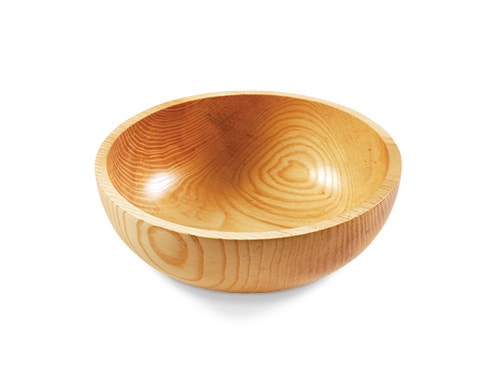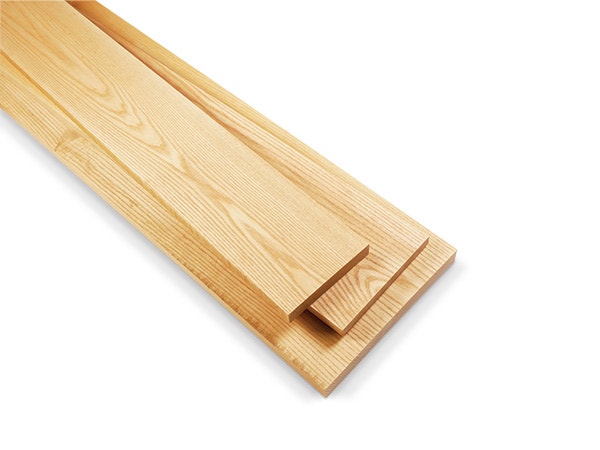Ash: Fraxinus nigra, Fraxinus americana
Often substituted for oak, ash is easy to work, shock-resistant and affordable. It's also under continued siege.
Since 1884, when the first Louisville Slugger baseball bat was turned out of a piece of white ash, both ballplayers and spectators alike have marveled at the shock resistance of this species. Woodworkers will appreciate ash's easygoing nature in the shop — it machines and fastens well and accepts both stain and dye readily. In fact, the lumber's open-pored structure, prominent flatsawn cathedrals and relative hardness have made it a convincing substitute for oak. Ash is also budget-friendly, with select grade lumber often selling for under $3 per board foot.
Commonly found at both home centers and lumberyards, clear poplar is available in wide widths and substantial lengths. It is modestly priced, compared with most other hardwoods. The wood has an indistinct, close grain pattern. It cuts, routs and fastens easily and sands quickly to a smooth, even surface.
The genus Fraxinus consists of 40 or more species of ash around the world with at least 14 types in North America.

Ash lumber is usually sold as white ash (Fraxinus americana) or black ash (Fraxinus nigra). The white ash group includes white, green and Oregon ash, while the black ash group includes black and pumpkin ash.
Color-wise, white ash has brown heartwood with creamy to white sapwood. Black ash has darker brown heartwood.
Will It Survive?

As you are probably already aware, North American ash trees have been under widespread siege by the emerald ash borer (EAB) beetle since 2002, where it first began decimating ash forests in Michigan. An invasive species from Asia, the beetle lays its eggs on the bark. Its larvae then bore into the tree's phloem, cambium and xylem layers where they create serpentine tunnels of destruction, effectively girdling the tree and starvingit of water and nutrients until it dies.
Advanced signs of infected trees include upper canopy die-off and bark with vertical splits. When the mature beetles emerge, they leave telltale D-shaped holes behind.
The USDA Forest Service reports that as of 2016, emerald ash borers have been found in at least 24 states, and they continue to spread each year. A certified arborist can provide systemic injections, soil treatments and bark and foliage sprays to protect healthy trees. Studies are currently underway to develop hybridized trees that are EAB resistant. However, the long-range future of this bountiful hardwood and welcomed neighborhood shade tree remains uncertain.
Shop Score Card
|
Uses: Baseball bats, tool handles, veneer , cabinets, furniture, flooring, millwork and crates. Hardness: Good overall strength properties relative to weight; excellent shock resistance. Country of Origin: Native range is widely distributed across the U.S. and Canada.Workability: Unseasoned ash dries easily with minimal degrade. Dried ash planes, cuts, routs, drills and fastens well. It's ideal for steam bending. Finishing: Readily accepts stains, dyes and top-coats. Open-pore structure may require filling. Cost: Low when compared to other furniture-grade hardwoods; comparable in price to poplar. |
Keep the inspiration coming!
Subscribe to our newsletter for more woodworking tips and tricks



